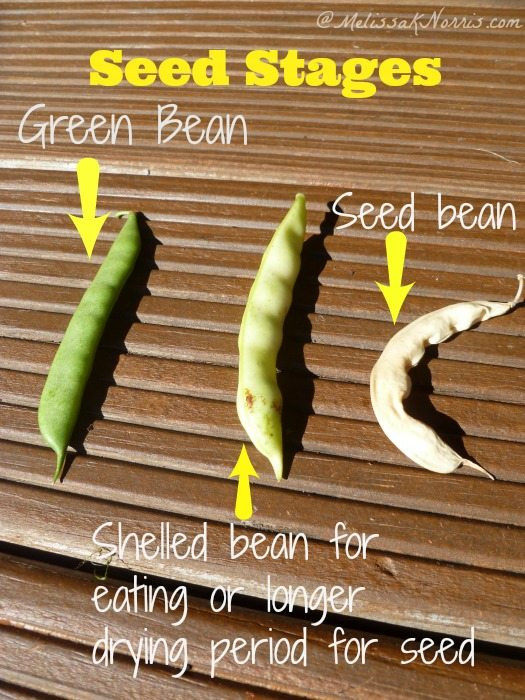Saving green bean seeds for the next growing season is a rewarding way to ensure a continuous supply of fresh produce and save money, and SaveWhere.net is here to guide you. We’ll explore essential techniques for harvesting, drying, and storing green bean seeds, empowering you to preserve your favorite varieties and cultivate a thriving garden year after year. Embrace sustainable gardening and enhance your self-sufficiency with our expert advice on preserving green bean seeds! You’ll learn valuable techniques for organic gardening, crop rotation, and managing your garden space efficiently.
1. Why Save Green Bean Seeds?
Saving green bean seeds offers numerous advantages, including cost savings, preservation of heirloom varieties, and increased self-sufficiency.
- Cost Savings: Purchasing seeds annually can be expensive. Saving your own seeds eliminates this cost, allowing you to allocate your gardening budget to other essentials.
- Heirloom Preservation: Heirloom varieties boast unique flavors and traits passed down through generations. Saving their seeds ensures their preservation, contributing to biodiversity.
- Self-Sufficiency: Becoming self-reliant in seed production reduces your dependence on external suppliers, fostering a more sustainable and resilient gardening practice.
- Adaptation: Seeds saved from plants that thrived in your garden are better adapted to your local climate and soil conditions, leading to improved yields over time.
- Genetic Diversity: Saving seeds from multiple plants within your garden helps maintain genetic diversity, making your crops more resilient to pests and diseases.
2. Understanding Green Bean Varieties for Seed Saving
Selecting the right green bean varieties is crucial for successful seed saving, with heirloom and open-pollinated types being the most suitable choices.
2.1. Heirloom vs. Hybrid Varieties
Heirloom varieties, with their rich history and stable genetics, consistently produce seeds that yield plants with the same characteristics as the parent plant. Hybrid varieties, created by cross-pollinating different parent plants, often result in seeds that do not produce true-to-type offspring.
2.2. Open-Pollinated Varieties
Open-pollinated varieties, like heirloom types, naturally produce seeds that remain stable over generations. These varieties allow for natural pollination, ensuring that the saved seeds will reliably produce plants with consistent traits.
2.3. Identifying Suitable Varieties
When selecting green bean varieties for seed saving, prioritize heirloom and open-pollinated types to ensure genetic consistency. Check seed catalogs or labels for information on the variety’s pollination type.
2.4. Popular Heirloom Green Bean Varieties
- Kentucky Wonder: A classic pole bean known for its exceptional flavor and productivity.
- Blue Lake: A bush bean prized for its stringless pods and excellent canning qualities.
- Romano: An Italian heirloom bean with flat, wide pods and a rich, meaty flavor.
3. When to Harvest Green Bean Seeds?
Harvesting green bean seeds at the right time is essential for ensuring their viability and long-term storage.
3.1. Visual Cues for Maturity
- Dry Pods: The bean pods should be completely dry, brittle, and brown or yellow in color.
- Shriveled Appearance: The pods will appear shriveled and feel papery to the touch.
- Rattling Seeds: You should be able to hear the seeds rattling inside the pods when you shake them.
3.2. Timing Considerations
Allow the bean pods to remain on the plant until they are fully mature and dry. This usually occurs towards the end of the growing season, several weeks after you would typically harvest green beans for eating.
3.3. Weather Impact on Harvesting
Avoid harvesting seeds during periods of wet or humid weather, as moisture can promote mold growth and reduce seed viability. If rain is expected, harvest the pods and dry them indoors.
3.4. Regional Differences
The ideal time for harvesting green bean seeds varies depending on your geographical location and climate. In warmer regions, seeds may mature earlier in the season, while in cooler regions, it may take longer for the pods to dry completely.
4. Step-by-Step Guide to Harvesting Green Bean Seeds
Follow these steps to harvest green bean seeds correctly, maximizing your chances of success.
4.1. Selecting Healthy Plants
Choose seeds from the healthiest plants in your garden, as these plants are more likely to produce viable and vigorous seeds. Avoid saving seeds from plants that show signs of disease or pest infestation.
4.2. Harvesting Tools
- Gardening gloves to protect your hands.
- Pruning shears or scissors for cutting the pods from the plants.
- A clean container or bag for collecting the harvested pods.
4.3. Harvesting Techniques
- Inspect the Plants: Examine the green bean plants and identify the pods that are fully dry and mature.
- Cut the Pods: Use pruning shears or scissors to carefully cut the pods from the plants, being careful not to damage the surrounding foliage.
- Collect the Pods: Place the harvested pods in a clean container or bag, ensuring they are not overcrowded.
- Label the Collection: Label the container or bag with the variety of green beans and the date of harvest.
4.4. Avoiding Damage to Seeds
Handle the bean pods gently during harvesting to avoid damaging the seeds inside. Avoid dropping or crushing the pods, as this can reduce seed viability.
**5. Drying Green Bean Seeds Properly
Proper drying is critical for preserving green bean seeds and preventing mold or decay during storage.
5.1. Importance of Drying
Drying removes excess moisture from the seeds, inhibiting the growth of mold and bacteria that can compromise their viability. Properly dried seeds are more likely to germinate successfully when planted.
5.2. Drying Methods
- Air Drying: Spread the harvested bean pods in a single layer on a clean, dry surface, such as a screen or tray. Place the screen or tray in a well-ventilated area, away from direct sunlight. Allow the pods to dry for several weeks, until they are brittle and the seeds rattle inside.
- Oven Drying: Preheat your oven to a low temperature (around 95°F or 35°C). Spread the bean pods in a single layer on a baking sheet and place them in the oven for several hours, checking frequently to ensure they do not overheat.
- Dehydrator Drying: Use a food dehydrator to dry the bean pods at a low temperature, following the manufacturer’s instructions.
5.3. Monitoring Moisture Levels
Check the moisture level of the seeds regularly during the drying process. The seeds should be completely dry to the touch and not feel pliable or soft.
5.4. Ideal Drying Environment
The ideal drying environment is warm, dry, and well-ventilated. Avoid drying seeds in humid or damp conditions, as this can promote mold growth.
6. Extracting Seeds from Pods
Once the bean pods are thoroughly dried, it’s time to extract the seeds for storage.
6.1. Manual Shelling
- Technique: Gently break open the dried bean pods by hand, carefully removing the seeds. Avoid using excessive force, as this can damage the seeds.
- Tools: Use gloves to protect your hands from any sharp edges on the pods.
- Efficiency: Manual shelling is a simple and effective method for small quantities of seeds.
6.2. Flailing Method
- Technique: Place the dried bean pods in a sturdy bag or pillowcase and gently strike the bag against a hard surface, such as a concrete floor or wooden table. This will break open the pods and release the seeds.
- Safety: Wear safety glasses to protect your eyes from any flying debris.
- Efficiency: The flailing method is suitable for larger quantities of seeds.
6.3. Winnowing Seeds
Winnowing is the process of separating the seeds from the chaff (the remnants of the bean pods).
- Technique: Pour the mixture of seeds and chaff from one container to another in a gentle breeze. The lighter chaff will be blown away, leaving the heavier seeds behind.
- Tools: Use a shallow tray or bowl for winnowing.
- Efficiency: Winnowing effectively cleans the seeds for storage.
6.4. Cleaning and Sorting Seeds
After extracting the seeds from the pods, clean and sort them to remove any debris or damaged seeds. Discard any seeds that are cracked, discolored, or shriveled.
7. Storing Green Bean Seeds for Longevity
Proper storage is essential for maintaining the viability of green bean seeds over the long term.
7.1. Choosing the Right Containers
- Airtight Containers: Use airtight glass or plastic containers to prevent moisture from entering and damaging the seeds.
- Desiccant Packets: Add desiccant packets to the containers to absorb any residual moisture and keep the seeds dry.
- Labeling: Label each container with the variety of green beans, the date of harvest, and any other relevant information.
7.2. Ideal Storage Conditions
- Cool Temperature: Store the seeds in a cool location, ideally between 32°F and 41°F (0°C and 5°C).
- Dark Environment: Store the seeds in a dark location to protect them from light, which can degrade their quality.
- Low Humidity: Store the seeds in a low-humidity environment to prevent moisture from damaging them.
7.3. Long-Term Storage Tips
- Refrigeration: For long-term storage, consider refrigerating the seeds in airtight containers with desiccant packets.
- Freezing: Freezing seeds can extend their viability even further, but it is essential to ensure they are completely dry before freezing.
- Regular Inspection: Periodically inspect the stored seeds for any signs of mold, pests, or damage.
7.4. Addressing Common Storage Issues
If you notice any issues with your stored seeds, take immediate action to prevent further damage.
- Mold Growth: Discard any seeds that show signs of mold growth.
- Pest Infestation: Freeze the seeds for several days to kill any pests.
- Moisture Damage: Dry the seeds thoroughly before returning them to storage.
8. Testing Seed Viability
Before planting your saved green bean seeds, it’s essential to test their viability to ensure a successful germination rate.
8.1. Germination Test Methods
- Paper Towel Test: Place a small number of seeds on a damp paper towel, fold the towel over, and place it in a plastic bag. Keep the paper towel moist and warm, and check for germination after a few days.
- Water Test: Place the seeds in a bowl of water. Viable seeds will sink to the bottom, while non-viable seeds will float.
8.2. Interpreting Results
- Germination Rate: Calculate the percentage of seeds that germinate during the test. A germination rate of 80% or higher is considered acceptable.
- Adjusting Planting Density: If the germination rate is low, increase the number of seeds you plant to compensate for the lower viability.
8.3. Factors Affecting Germination
- Seed Age: Older seeds are less likely to germinate than newer seeds.
- Storage Conditions: Improper storage conditions can reduce seed viability.
- Environmental Factors: Temperature, moisture, and light can all affect germination.
8.4. Troubleshooting Germination Issues
If you experience problems with germination, consider the following:
- Seed Quality: Use fresh, high-quality seeds.
- Soil Conditions: Ensure the soil is well-draining and fertile.
- Watering: Provide adequate moisture without overwatering.
9. Planting Your Saved Green Bean Seeds
When it’s time to plant your saved green bean seeds, follow these guidelines for optimal growth.
9.1. Preparing the Soil
- Soil Testing: Test your soil to determine its pH and nutrient levels.
- Amending the Soil: Amend the soil with compost or other organic matter to improve its fertility and drainage.
- Tilling: Till the soil to loosen it and prepare it for planting.
9.2. Planting Techniques
- Direct Sowing: Plant the seeds directly into the garden soil after the last frost.
- Starting Indoors: Start the seeds indoors in seedling trays or pots, and transplant them into the garden after the last frost.
- Spacing: Space the seeds according to the variety’s recommendations, usually about 2-4 inches apart.
9.3. Watering and Fertilizing
- Watering: Water the seeds regularly to keep the soil moist but not waterlogged.
- Fertilizing: Fertilize the plants with a balanced fertilizer after they emerge.
9.4. Pest and Disease Management
- Companion Planting: Plant companion plants, such as marigolds or basil, to deter pests.
- Crop Rotation: Rotate your crops each year to prevent the buildup of soilborne diseases.
- Organic Pest Control: Use organic pest control methods, such as insecticidal soap or neem oil, to control pests.
10. Troubleshooting Common Problems
Even with careful planning, you may encounter challenges when saving green bean seeds. Here are some common problems and solutions:
10.1. Low Germination Rates
- Problem: Low germination rates can be frustrating.
- Solution: Test seed viability before planting. Adjust planting density as needed. Ensure proper soil conditions and watering practices.
10.2. Mold Growth During Drying
- Problem: Mold can ruin your seeds.
- Solution: Dry seeds in a well-ventilated area. Monitor moisture levels closely. Discard any moldy seeds.
10.3. Pest Infestation in Stored Seeds
- Problem: Pests can damage your stored seeds.
- Solution: Freeze seeds to kill pests. Store seeds in airtight containers with desiccant packets.
10.4. Cross-Pollination Concerns
- Problem: Cross-pollination can affect seed purity.
- Solution: Isolate different varieties of green beans. Save seeds from heirloom or open-pollinated varieties.
11. Advanced Seed Saving Techniques
For gardeners looking to deepen their seed-saving knowledge, here are some advanced techniques:
11.1. Understanding Plant Genetics
Learn about plant genetics to better understand how traits are inherited and how to select for desired characteristics.
11.2. Isolation Techniques
Master isolation techniques to prevent cross-pollination and maintain seed purity.
11.3. Seed Banking
Consider seed banking to preserve rare or endangered varieties of green beans.
11.4. Participating in Seed Swaps
Join seed swaps to exchange seeds with other gardeners and expand your collection.
12. Resources for Further Learning
Here are some valuable resources for expanding your seed-saving knowledge:
12.1. Books on Seed Saving
- “Seed to Seed: Seed Saving and Growing Techniques for Vegetable Gardeners” by Suzanne Ashworth
- “The Seed Garden: The Art and Practice of Seed Saving” by Lee Buttala and Shanyn Siegel
12.2. Websites and Online Forums
- Seed Savers Exchange (https://www.seedsavers.org/)
- Local gardening clubs and organizations
12.3. Workshops and Seminars
Attend workshops and seminars on seed saving to learn from experienced gardeners and experts.
13. The Importance of Seed Saving for Sustainability
Seed saving plays a crucial role in promoting sustainable agriculture and preserving biodiversity.
13.1. Preserving Biodiversity
Saving seeds helps maintain genetic diversity in crops, making them more resilient to pests, diseases, and climate change.
13.2. Supporting Local Food Systems
Saving seeds allows gardeners and farmers to produce their own seeds, reducing their dependence on external suppliers and supporting local food systems.
13.3. Adapting to Climate Change
Saving seeds from plants that thrive in your local climate helps you adapt to changing environmental conditions and ensure a consistent food supply.
13.4. Empowering Communities
Seed saving empowers communities to take control of their food supply and promote sustainable agriculture practices.
14. How SaveWhere.net Can Help You Save Money
At SaveWhere.net, we are dedicated to helping you save money while pursuing your gardening passions.
14.1. Discounts on Gardening Supplies
Discover exclusive discounts on gardening supplies, including seeds, tools, and fertilizers.
14.2. Tips for Budget-Friendly Gardening
Learn tips for budget-friendly gardening, such as using recycled materials and composting.
14.3. Community Forums for Sharing Tips
Join our community forums to share your seed-saving tips and learn from other gardeners.
14.4. Special Offers on Seeds and Plants
Take advantage of special offers on seeds and plants to expand your garden without breaking the bank.
15. Frequently Asked Questions (FAQs)
15.1. Can I save seeds from hybrid green beans?
No, it’s generally not recommended to save seeds from hybrid green beans, as they may not produce true-to-type offspring.
15.2. How long do green bean seeds remain viable?
Green bean seeds can remain viable for 3-5 years if stored properly in a cool, dark, and dry location.
15.3. What’s the best way to dry green bean seeds?
The best way to dry green bean seeds is to air dry them in a well-ventilated area, away from direct sunlight.
15.4. How do I know if my green bean seeds are still good?
Test the seed viability by performing a germination test before planting.
15.5. Can I freeze green bean seeds for long-term storage?
Yes, you can freeze green bean seeds for long-term storage, but ensure they are completely dry before freezing.
15.6. What are the ideal storage conditions for green bean seeds?
Ideal storage conditions include a cool temperature (32°F-41°F), a dark environment, and low humidity.
15.7. How do I prevent mold growth during seed drying?
Ensure seeds are dried in a well-ventilated area and monitor moisture levels closely.
15.8. What should I do if I find pests in my stored seeds?
Freeze the seeds for several days to kill any pests.
15.9. How important is it to isolate different green bean varieties when saving seeds?
Isolating different varieties is important to prevent cross-pollination and maintain seed purity.
15.10. Where can I find more resources on seed saving?
Check out books, websites, and workshops on seed saving for more information and guidance.
16. Conclusion: Embrace Seed Saving for a Sustainable Garden
 Dried Kentucky Wonder Green Bean Pods ready for seed collection
Dried Kentucky Wonder Green Bean Pods ready for seed collection
Saving green bean seeds is a rewarding way to ensure a continuous supply of fresh produce, preserve heirloom varieties, and promote sustainable gardening practices. With the knowledge and techniques shared in this guide, you’ll be well-equipped to harvest, dry, store, and plant your own green bean seeds year after year. Embrace the joys of seed saving and cultivate a thriving garden that benefits both you and the environment. Visit SaveWhere.net today to discover more tips, resources, and special offers to help you save money and grow your garden sustainably.
Ready to start saving green bean seeds and cultivate a sustainable garden? Visit SaveWhere.net now to explore our exclusive deals on gardening supplies and connect with a community of passionate gardeners. Take control of your food supply and embark on a rewarding journey of self-sufficiency and environmental stewardship. Don’t miss out on the opportunity to save money, preserve heirloom varieties, and enhance your gardening experience. Join SaveWhere.net today and let’s grow together! Address: 100 Peachtree St NW, Atlanta, GA 30303, United States. Phone: +1 (404) 656-2000. Website: savewhere.net.


